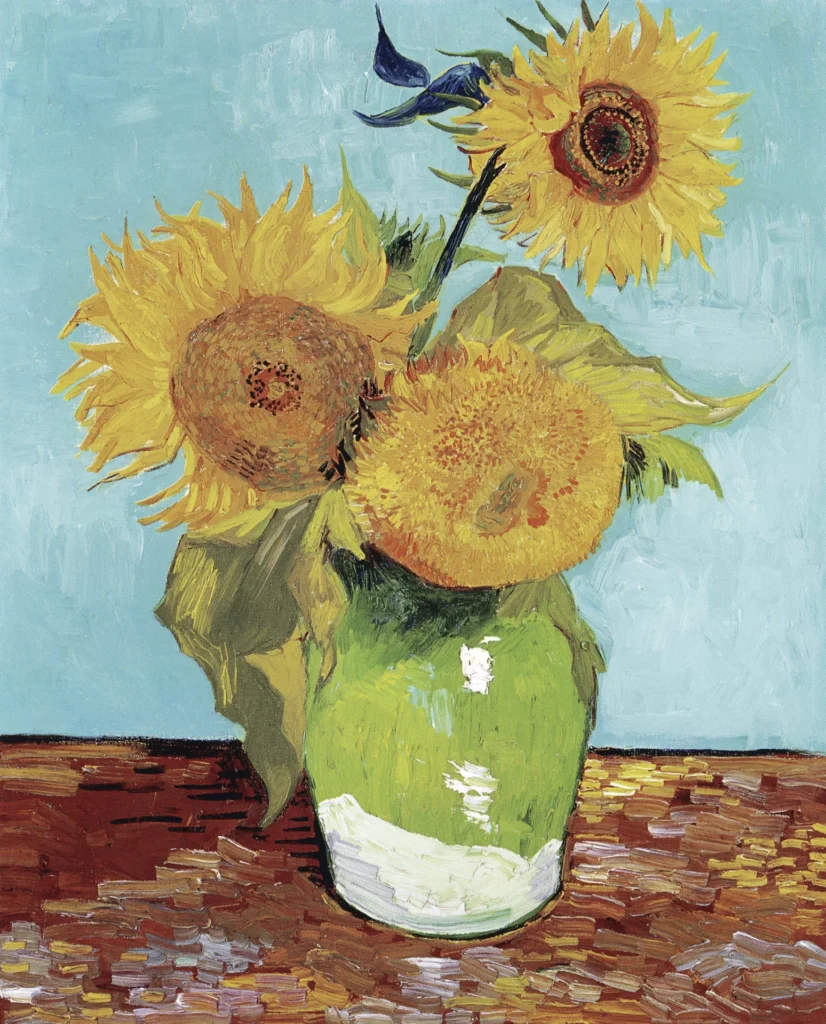Vase With Three Sunflowers (1888)
Created in August 1888, Vase with Three Sunflowers symbolizes Vincent van Gogh's emotional and artistic fervor. This stunning piece, measuring 73 cm x 58 cm, reflects Van Gogh's unique ability to manipulate shades of yellow, bringing the sunflowers to life. Intended to decorate the Yellow House in Arles for his friend Paul Gauguin, this artwork is a splendid representation of Van Gogh's innovative style and deep emotions toward his subjects.
August 1888
About the Artwork
Vincent van Gogh created Vase with Three Sunflowers as part of a vibrant series that was deeply personal and meant to welcome his close friend, Paul Gauguin, to the Yellow House in Arles, France. In preparation for Gauguin's visit in August 1888, Van Gogh envisioned transforming their studio into a warm and inviting space filled with sunflowers that represented gratitude and optimism. Each sunflower painting encapsulated Van Gogh's dynamic approach to color; he employed multiple shades of yellow to convey warmth and vitality. The flowers, so simple yet charged with emotion, became an enduring symbol of Van Gogh's artistic legacy and a testament to his expressive capability.
Did You Know
The painting was created in the context of Van Gogh’s ambition to transform his home, the Yellow House, into a vibrant artistic haven for himself and Paul Gauguin, showcasing a warm welcome through his sunflower series.
Van Gogh’s use of varying shades of yellow in this artwork not only reflects his emotional state but also his fascination with color theory. He believed yellow emanated joy and warmth, capturing the essence of life itself.
Since its last public exhibition in 1948, Vase with Three Sunflowers has remained in private hands, generating intrigue in the art world. The lack of visibility heightens the painting’s mystique and desirability among collectors.










